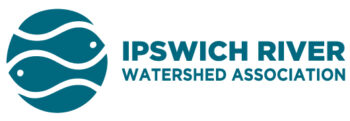“I miss clamming and the comradery on the flats,” says Judy Schneider, who has been clamming in Ipswich for years, ever since her friend, long-time clammer and Middleton resident Fran Masse showed her the ropes.
Ipswich is one of the many areas on the North Shore which have had to close down their clam flats to commercial and recreational clamming due to red tide. It’s the first widespread red tide closure in years, and impacts the 400 plus commercial shell fisherman in Great Marsh region. The closure encompasses the entire North Shore, meaning it impacts adjoining rivers to the Ipswich as well.
The need for these closures is determined by the MA Division of Marine Fisheries, who sample shellfish and test toxin concentrations throughout potential red tide season, May through November. Red tide usually begins off southern Maine then drifts south with prevailing currents to our area. The cause is not known, but when conditions are right, the algae species can generally outcompete other species leading to elevated concentrations in water.
The toxin produced naturally by the algae is a neurotoxin affecting the central nervous system which is harmless to most marine life, but dangerous to warm blooded species including mammals and birds. As filter feeders of algae, shellfish tend to concentrate the toxin in their bodies, making consumption of contaminated shellfish hazardous. With the closures coming at the busiest season, commercial losses in Ipswich alone will be hundreds of thousands of dollars. Add to that the 400+ recreational harvesters in Ipswich alone. Those who enjoy the fruits of their labor on the flats are out of luck this summer. We won’t be seeing any clambakes with local clams, either until the flats re-open.
It’s not just the world famous Ipswich River clams we’re missing out on, but the entire experience of being out in the magical, shifting world of the flats. “I miss that moment when I stand up to stretch and gaze over the flats when I am clamming,” says Judy. “A look to see if the tide is encroaching. Are the guls sneaking up to grab those clams I put aside, too small to take home? Are the clammers in boats on their way in? Do my buddies have more clams dug than I do? Despite the mud, my camera is part of my clamming gear, ready to take out to capture the always beautiful scene.”
This red tide has toxin levels on the lower side of the public health safety scale, so hopefully shellfish beds can be re-opened in August to salvage at least some of the lucrative summer clamming season. These closures are an excellent reminder of what we lose out on when we don’t protect vulnerable resources. Heavy rains, especially following longer periods of no rain, also result in clam flat and oyster bed closures due to stormwater pollution. By working to reduce and control run-off pollution, we can help clammers like Judy get back out enjoying the places they love.
[blog_subscription_form title=”Subscribe For More River Updates”]
